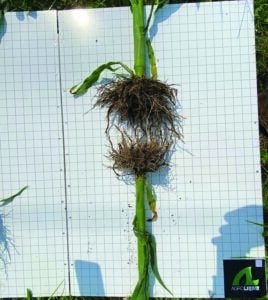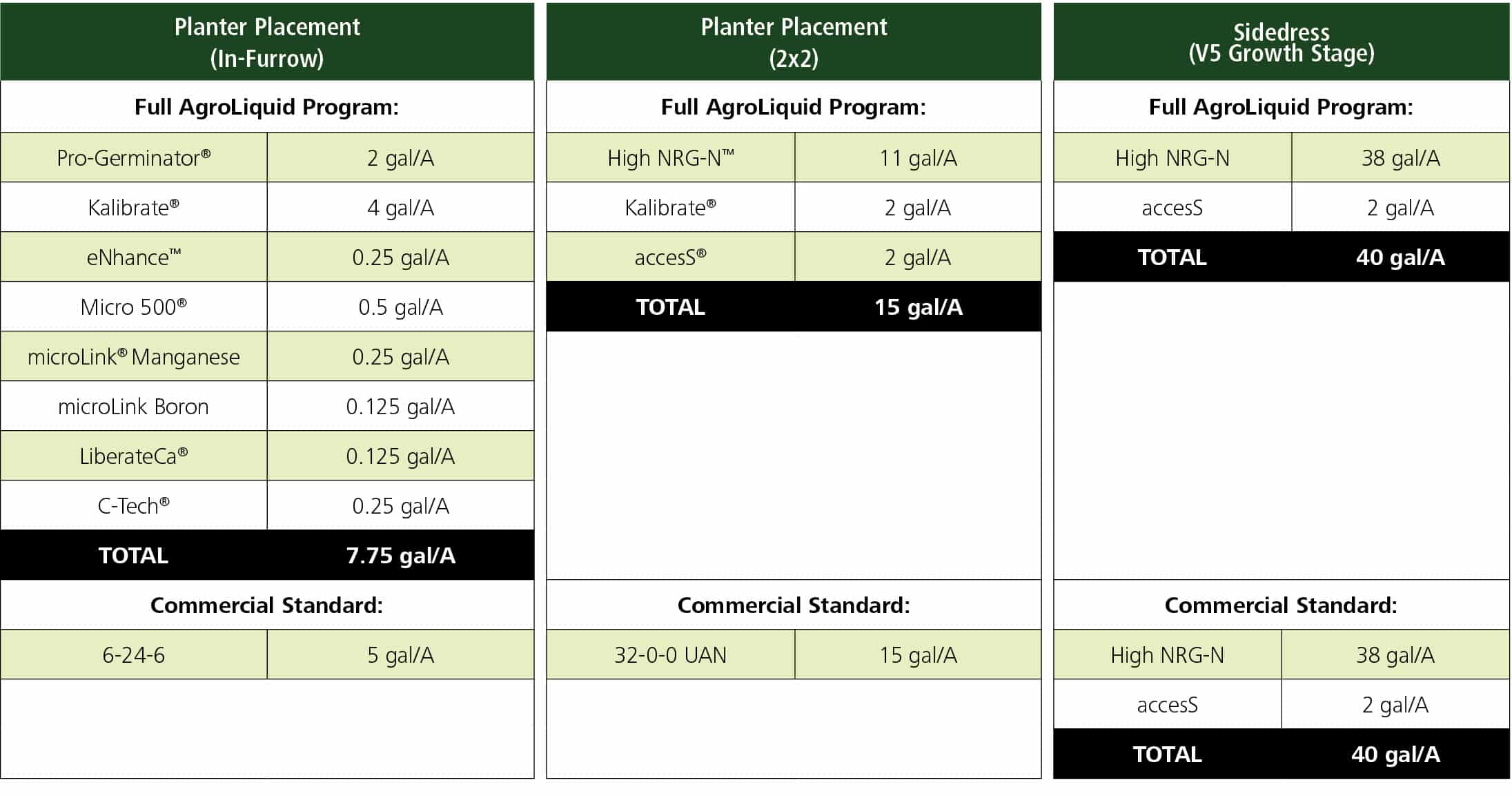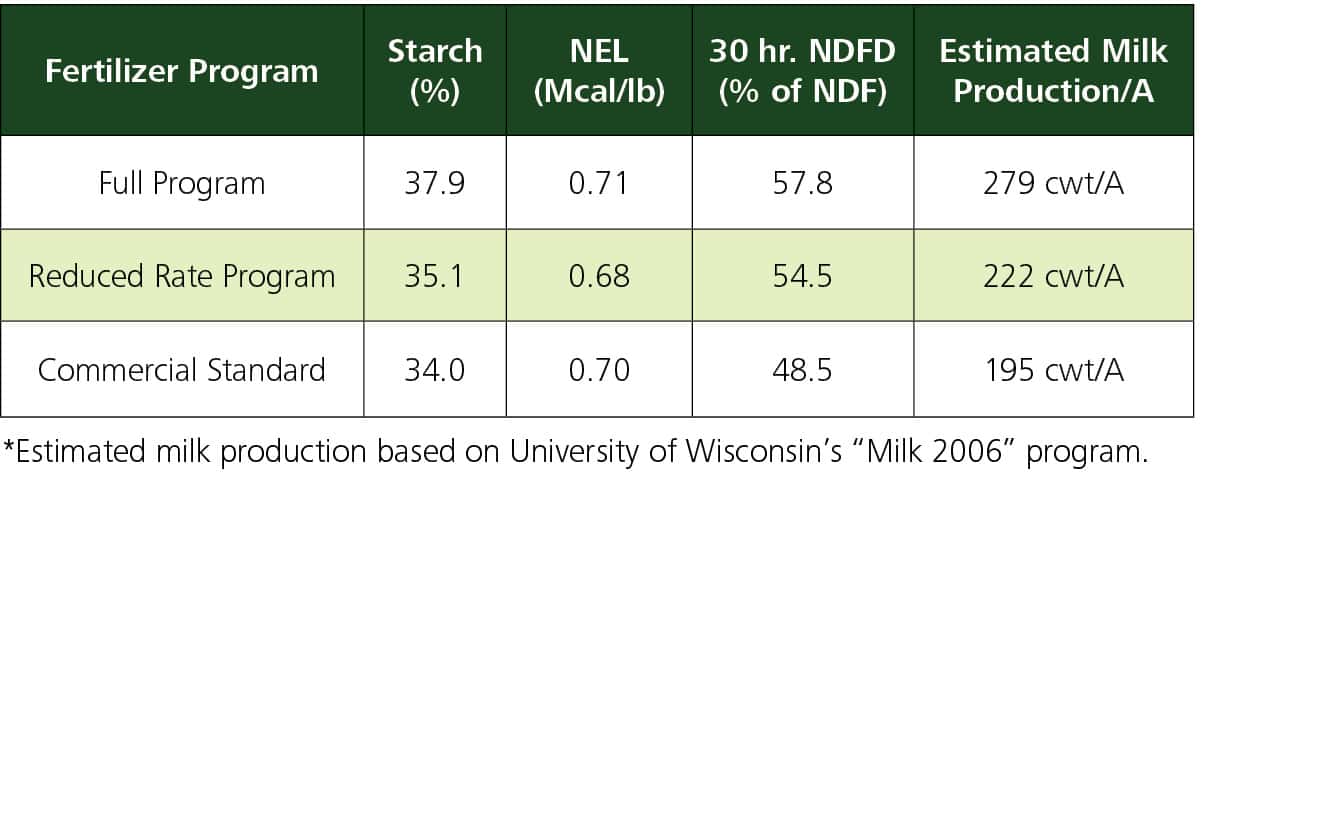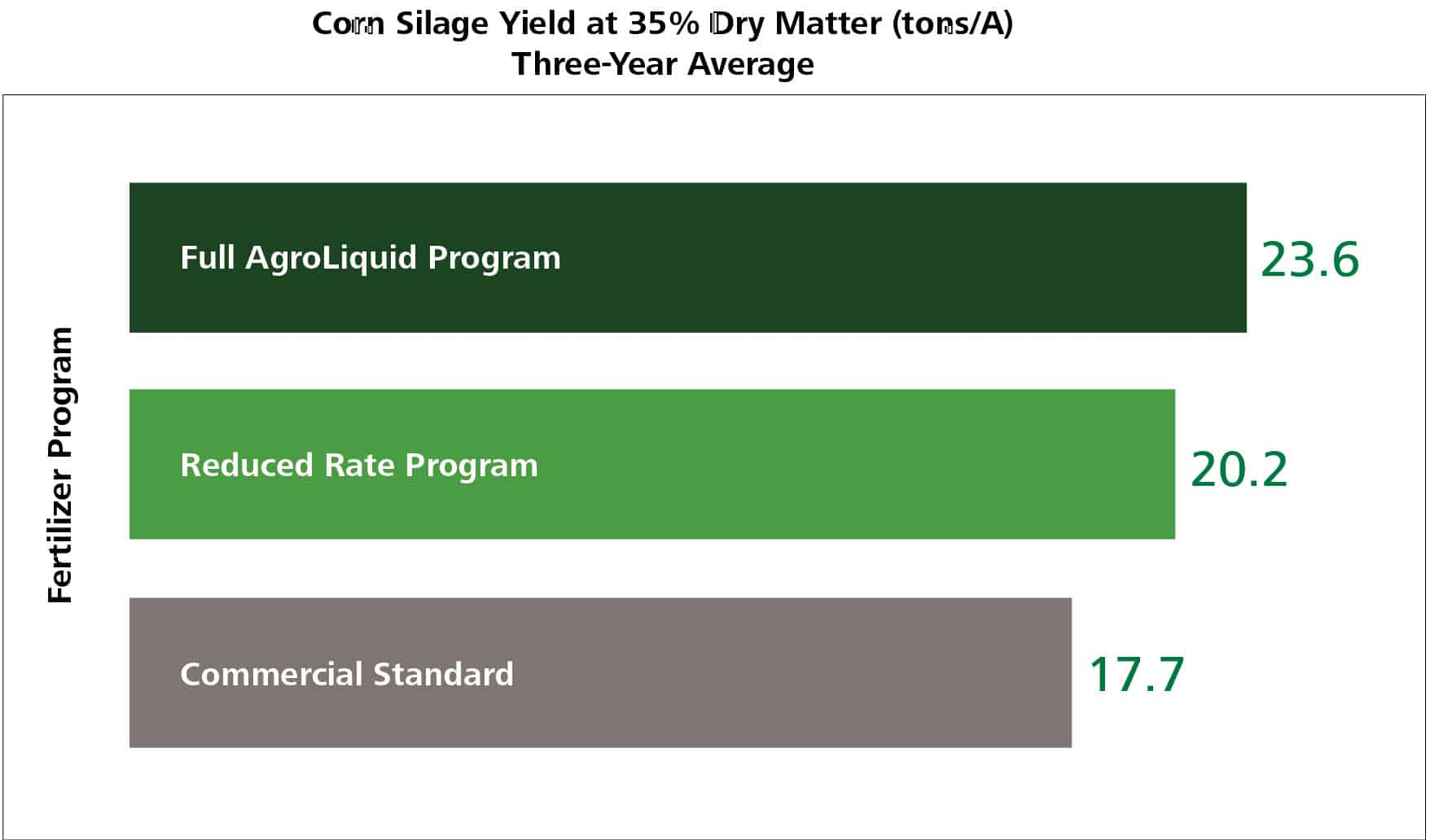
To increase corn silage yield and feed quality, AgroLiquid conducted a three-year research project in central New York.
Of course, corn silage is an important forage for many high-producing dairy herds. With its high energy content, corn silage is also used for finishing cattle. Because this forage is often the base for total feed rations, it’s important to produce a high-quality silage.
AgroLiquid and Dairy One, a dairy consulting group associated with Dairy Farmers of America, collaborated on these trials. Dairy One laboratories conducted forage analysis for this project, and forage quality values were entered into the milk production model “Milk 2006” developed by the University of Wisconsin.
The New York fields used in this project had adequate phosphorus levels, modest potassium levels, and low to modest sulfur and micronutrient levels. The AgroLiquid program was developed to address the nutrient needs of 30 ton/acre corn silage while using the crop nutrition present in the soil. The AgroLiquid program was compared to the commercial standard for the area as well as a reduced rate AgroLiquid fertilizer planter treatment using the same mix as in the full program.
Benefits of proper crop nutrition for corn silage:
- Increased corn silage yield
Increased corn silage yield means more available feed, or fewer acres required to feed a herd. Using the results from this project, it would require 140 acres of corn silage treated with the AgroLiquid program to fill a 50’ x 200’ x 20’ bunker, compared to 194 acres of corn silage treated with the commercial standard program. That’s a difference of 54 acres!
Production from the remaining acres could be sold as a cash crop, or the land could be planted to other forages.
- Increased forage quality increases milk production and profitability
Increased forage quality, in addition to increased yield, means more milk per acre of silage. Results from this project showed an average estimated increase of 8400 lb of milk/acre of silage treated with the full AgroLiquid program.
The average cost of the AgroLiquid program was about $100/ acre higher than the commercial standard 6-24-6 + 32% UAN. Using a milk price of $0.15/lb, the extra milk provided an additional $1260/acre of silage fed, for a 12.6:1 return on investment. That’s a substantial ROI – 12.6:1.
- Increased forage quality reduces total feed cost for the herd
Using high quality corn silage to increase milk production reduces the cost of cornmeal and other feed inputs. The corn silage receiving the full AgroLiquid program provided over 2600 Mcal of energy that is required by cows to produce the additional 8400 lbs. of milk/acre compared to the commercial standard. The energy supplied by silage replaces about 2900 lbs. of cornmeal with a value of $270.
This means that on a 1000 cow dairy there is the equivalent energy to replace over 8 lbs. of ground corn per cow per day by feeding the higher energy silage produced on the AgroLiquid program.

Being able to feed more forages and less grain for the same milk production saves money on feed, keeps cows healthier on a higher forage diet, reduces metabolic issues, and decreases foot issues in the herd. This reduces stress on the cows and improves the overall productivity of a dairy operation.
First, it’s a financial win. Forage is generally less expensive than grain, so being able to achieve the same milk production with less grain translates to direct savings on feed costs. This is particularly important in times of volatile commodity prices, providing a buffer against market fluctuations.
It’s not just about the bottom line. A higher forage diet promotes better rumen health, which leads to improved digestion and nutrient absorption. This reduces the risk of metabolic disorders like acidosis and ketosis, which can be costly and detrimental to health.
Also, a forage-rich diet has been linked to a decrease in foot problems. This might seem surprising, but the connection lies in the rumen. When cows consume too much grain, it can disrupt the rumen environment, leading to the production of elements that can negatively impact hoof health. By prioritizing forage, we support a healthier rumen and healthier hooves.
Beyond the physical benefits, a higher forage diet also contributes to reduced stress levels in the herd. Cows on a forage-based diet spend more time ruminating, a natural and stress-free activity for them. This overall improvement also contributes to the productivity and longevity of the herd.
Quality crop nutrition for corn silage production produces healthier, more productive plants with higher forage quality, improving milk production and profitability of a dairy operation. It is important for dairy producers to test their corn silage for forage quality and balance the feed ration to meet the needs of the herd.
Consult an animal nutrition specialist to assist with balancing rations if necessary. For questions regarding crop nutrition planning, contact your local AgroLiquid retail partner or AgroLiquid representative.
Products used
Kalibrate
Kalibrate is a clean, chloride- and hydroxide-free potassium solution that also contains sulfur. The unique formulation improves crop utilization, allowing lower total product application volume to produce the same results as other conventional potassium fertility products when applied at typical rates.
Pro-Germinator
Pro-Germinator is used primarily for the application of phosphorus, but is partnered with nitrogen, potassium, and micronutrients for maximum performance. Phosphorus is a nutrient that is critical for early plant development in a crop as well as in the reproductive stages. Phosphorus is the key nutrient in getting a pasture stand established, and in forages, the primary task of phosphorus is transforming protein, fat, and carbohydrates into energy.
accesS
accesS is a high-efficiency sulfur fertilizer. Our formula allows plants to more efficiently absorb sulfur and keeps more plant-usable sulfur in the soil. At the same time, accesS uses a lower concentration of sulfur at lower rates, but provides the same or better results compared to commodity fertilizers. This makes it an economical and environmentally responsible choice.
Microlink
Most farmers focus on macronutrients to improve yields and crop quality. However, micronutrients also play a pivotal role in crop development. If micronutrient deficiencies persist year after year, they will continue to damage crops regardless of the nitrogen, phosphorus and potassium applied. That’s where our microLink family of products can come in. From boron to molybdenum, we have a full line of micronutrients.
*Top image: Mid-season measurements in the full program plots showed corn plants were 30% larger in diameter and 12″ taller than corn plants in the commercial standard plots. Root development was also better in full program plots.


